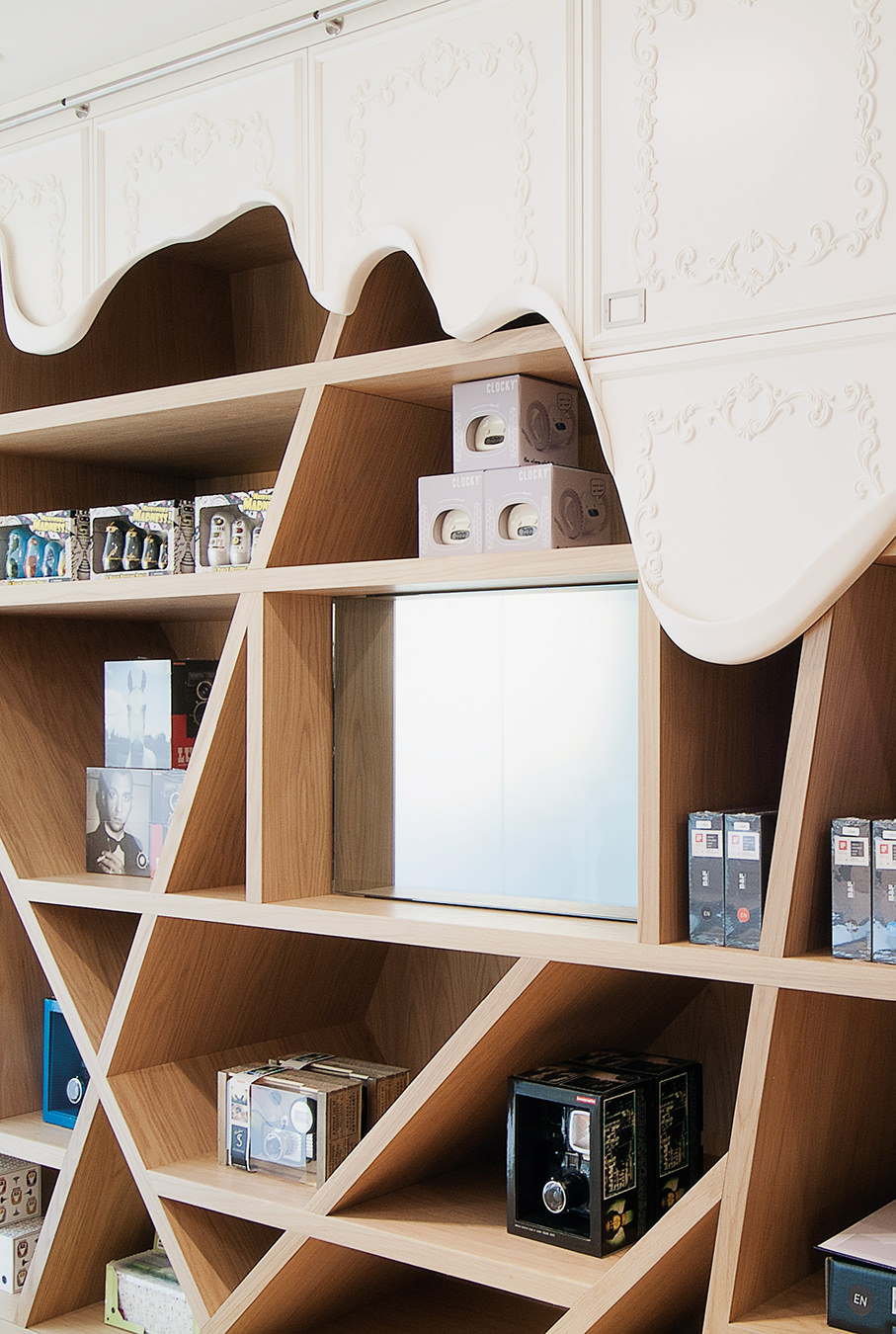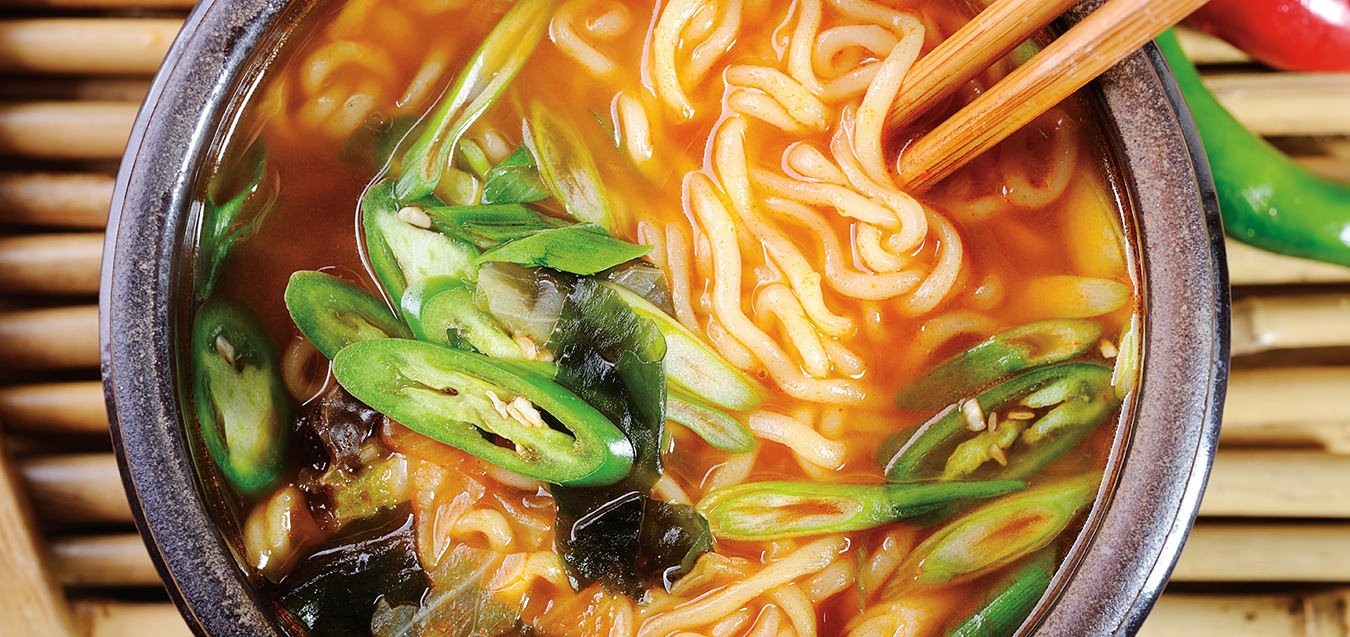Chef’s Table: Seigo Nakamura
Seigo Nakamura revolutionized the sushi scene in Canada with the introduction of flame-seared aburi sushi.
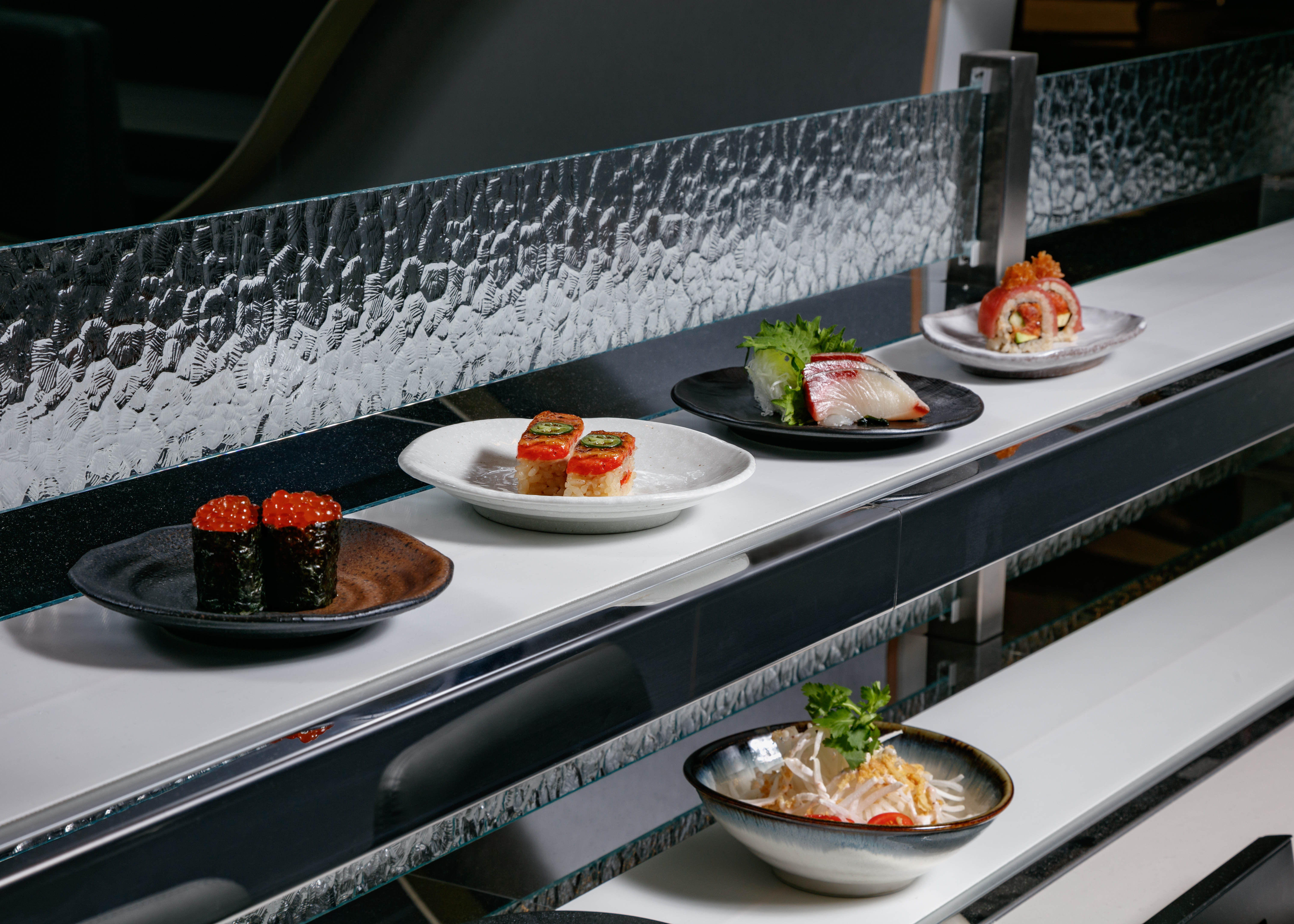
Flame-seared sushi. It seems like an oxymoron, but giving the kiss of fire to impeccably fresh seafood is the alchemic key to creating an innovative style of sushi known as aburi. Shari, or seasoned sushi rice, is the foundation, and binchotan (Japanese bamboo) charcoal imparts a hint of smokiness to the lightly caramelized sauce painstakingly selected to complement each type of fish. The end result is a delicate interplay of ingredients, textures, and techniques that’s far greater than the sum of its parts. Buoyed by the huge success of aburi sushi at his restaurants in Miyazaki, Japan, Seigo Nakamura introduced it to Canada in 2008 when he opened Miku Restaurant in Vancouver’s Coal Harbour. Diners were hesitant to accept his inventive twist on oshizushi (pressed sushi), but its popularity began to gain momentum in Miku’s second year of business. Fast-forward 11 years and five restaurants in two cities, and aburi has become part of the savvy sushi lover’s lexicon in both Vancouver and Toronto.
One of the oldest forms of sushi, oshizushi traces its origins back more than 400 years to Osaka in Japan’s Kansai region. It’s made by lining a rectangular oshiwaku box mould with sushi rice, then layering it with raw or cooked fish before firmly pressing down on it with a lid to compress the sushi. To finish, the oshizushi is sliced into rectangles or squares for a precise, elegant presentation.
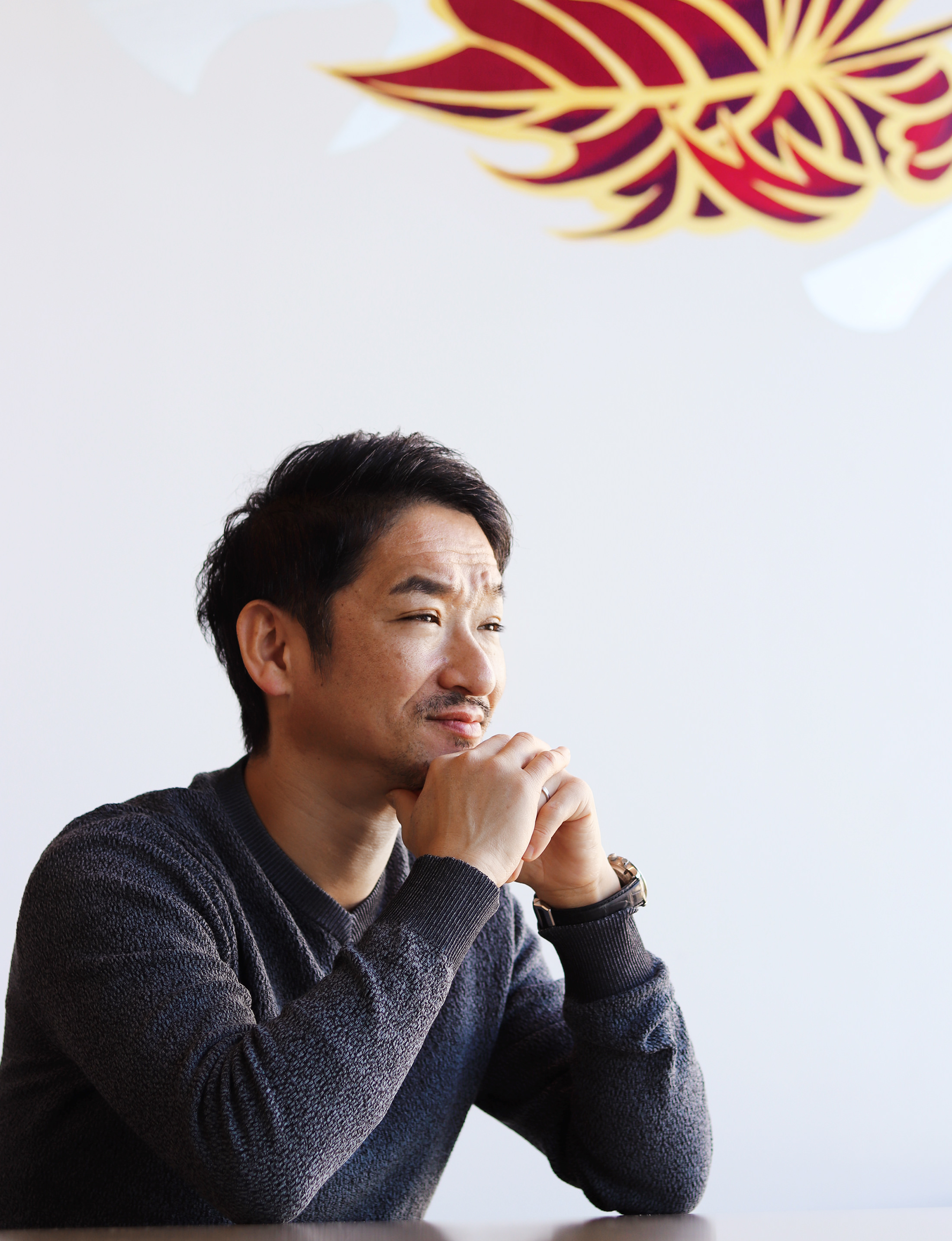
Seigo Nakamura. Photo by Cody Chan.
Nakamura underscores the paramount significance of using skillfully made shari. “Sushi rice is very important in Japan,” he explains. “People here in Canada don’t realize how important the balance between rice and fish is. And I wanted them to enjoy the actual essence of sushi.” Dipping sushi into soy sauce is common in North America, but is never done in Japan because it obscures this balance. So Nakamura began experimenting with different combinations of seafood and sauce that would complement each other. “It’s all about a marriage of flavours, and understanding which sauce enhances which seafood best without overpowering it.” After it’s applied to the fish, the sauce is seared with binchotan charcoal, caramelizing it and enhancing the umami taste of each piece of fish.
Three types of aburi oshizushi are available on the menu at Nakamura’s Miku restaurants in Toronto and Vancouver, Minami in Vancouver, and Tora Restaurant in Toronto’s Yorkdale Shopping Centre. There’s pressed B.C. wild sockeye salmon topped with signature Miku sauce and a thin sliver of jalapeño. Ebi is pressed prawn accented by the unique tartness of ume (sour plum) sauce and the vibrant brightness of grated lime zest. And saba is pressed house-cured mackerel with miso sauce as an earthy counterpoint.

Aburi sushi at Minami, Vancouver. Photo by Mark Yuen.
Since his start in the restaurant industry as a sushi chef, Nakamura has always pushed the creative envelope. “I really loved creating something different, instead of following what has been done in the past,” he says. “Innovation was the key for me to step up to the next level.” He used aburi sushi as a springboard for success when he took over one of the three restaurants in his father’s Sushi Tora chain at age 20; it was a runaway hit with the restaurant’s expat VIP and professional athlete clientele.
Captivated by Vancouver’s beauty while on holiday in 2007, he seized the opportunity to forge a new path across the Pacific and introduce the city to his ingenious alternative to nigiri and maki. Nakamura explains, “My goal was to break culinary stereotypes and create a different kind of culture, combining what we have in Japan with the ingredients and flavours that are unique to this incredible city.” He incorporated both design and service in bridging this gap, modifying the aesthetic and front-of-house approach at Miku from traditional Japanese to one that was more in keeping with Canadian preferences.
His concept took hold and flourished in Vancouver, leading to the opening of Minami in June 2012 and Gyoza Bar in September 2014. Always pushing forward, Nakamura recognized that the concept would be easy to transplant across the country, and Toronto was his next destination of choice. “I was excited about expanding to Toronto because it’s the largest city in Canada, giving me the potential to introduce every single restaurant concept I’ve envisioned,” he reflects. He opened Miku Toronto in October 2015, bringing Aburi Prime with him from Vancouver as the next evolution of his culinary hallmark. Offered either as stand-alone omakase (chef’s choice) or as part of a more comprehensive set menu including an amuse-bouche, a trio of starters, and dessert, it features nine pieces of premium nigiri sushi crafted in Miku’s hallmark aburi style. Seasonal standouts include A5 Japanese wagyu beef with uni and micro dianthus, and sweet Hokkaido hotate (scallop) brightened with yuzusalsa and micro red shiso.
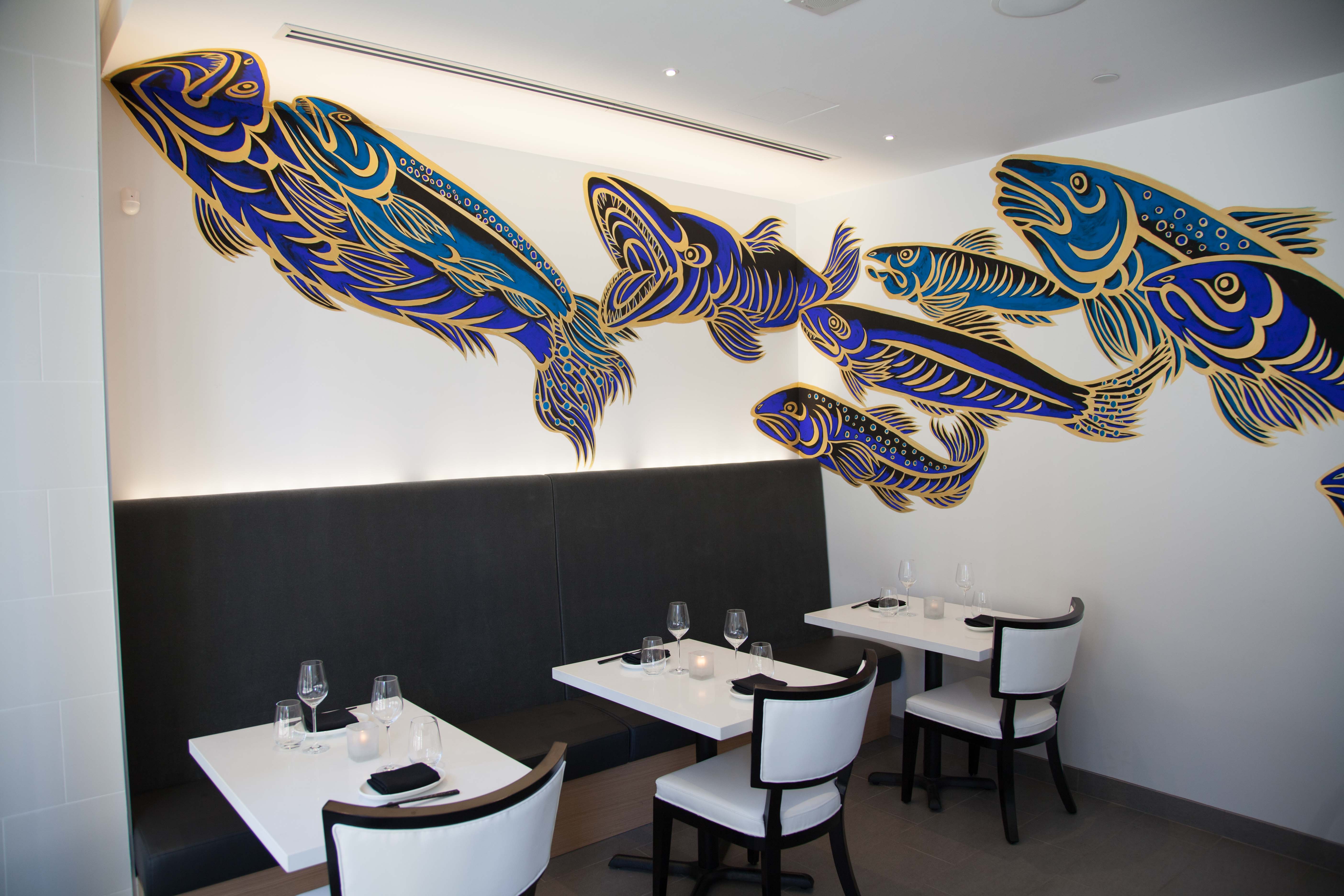
Miku Toronto.
Paying homage to his family’s restaurant group in Japan, Tora is Nakamura’s newest endeavour, located in Toronto’s Yorkdale. “Developing Tora was a huge creative concept. Sugoi—it’s one of the biggest projects we’ve undertaken in opening a restaurant,” he says excitedly. Launched in late January 2019, the sleek yet casual dining space dovetails Japanese tradition with an innovative sushi concierge system. Guests place their orders using a tablet installed at each table, and a direct delivery conveyor belt system quickly transports their order to them straight from the chef’s hands.
EdoPrime nigiri is Tora’s exclusive culinary centrepiece: Edomae (Tokyo-style) sushi, featuring premium seafood sourced from Japan served with akazu shari (red sake vinegar sushi rice). Explaining the importance of delivering sushi to guests as soon as it’s made, Nakamura emphasizes, “Our central focus at Tora is on the temperature of the rice. It should be served warmer, like body temperature, not cold, like out of the refrigerator.” A tiny sticking point, perhaps, but a crucial one.
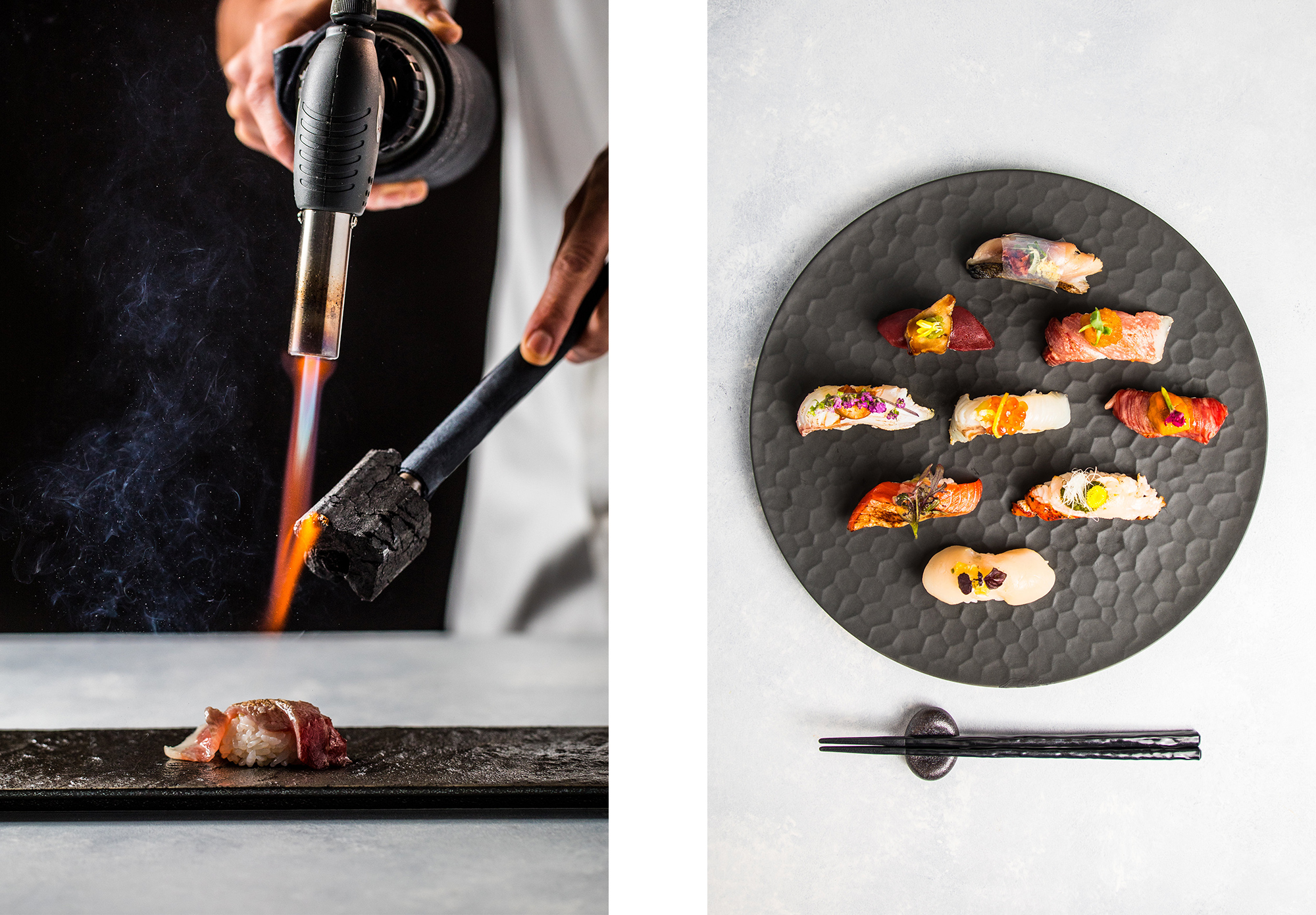
Flame-seared sushi. Photo by Mark Yuen.
Beyond the food itself, Nakamura has incorporated the transformative balance of aburi sushi into his corporate philosophy. “When I first opened Miku in Vancouver, aburi was only a cooking method. But thinking about how fire changes the essence of sushi ingredients and makes them even better, I realized that this cooking method mirrors my perspective on business and innovation.” He both respects and is inspired by the ingredients produced where he is, combining them with Japanese tradition to create a new kitchen culture and culinary approach that fuses the best of both worlds. “Why couldn’t we do this as a company, not just as a kitchen—have that kind of philosophy for the whole restaurant group and expand it globally?”
With a twinkle in his eye, Nakamura contemplates what’s next on the horizon. “Perhaps in 10 years’ time, I’d like to see aburi sushi recognized internationally. Until now, I didn’t want to risk a lot of adventure. But there’s a lot of potential out there, and I’m going to make my future rather than waiting for the future to come to me.” 
_________
Never miss a story. Sign up for NUVO’s weekly newsletter, here.



